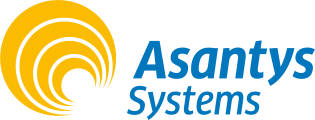Typical Regulations for the Installation and Operation of Small Hydro Power Plants (SHPP)
Policy Instruments Supporting SHP in South-East Asia (SEA)
Indonesia
In Indonesia, the decree on Small Power Purchase Tariffs (SPPT) opens the energy generation market to private entrepreneurs and cooperatives. The decree aims to regulate the selling of privately produced electricity to PLN (the electric utility of Indonesia), with one of its priorities being the electricity production from non-conventional energy sources (NRES) such as wind, solar and mini-hydro. PLN, according to the small power project agreement (SPPA) and the SPPT, will purchase NRES-based electricity generated and fed into the PLN grid by private companies. All SPPAs are long-term agreements with PLN to safeguard the interest of the private investor.
The Philippines
The Philippine Department of Energy’s Renewable Energy Power Program (REPP) allocates US$30 million as a financial facility for private sector participation in NRE projects with capacities ranging from 200 kW to 25 MW. Project proponents are free to negotiate the financial terms with the conduit bank but the proposed interest rate, 12% for the funding source plus a 4-6% spread for the conduit, seems unattractive. To stimulate mini-hydro development, the Philippine government enacted Republic Act 7156, or the Mini-hydro Law. The law stipulates special incentives and privileges, such as tax and duty-free imports, lower sales tax, 10% VAT exemption, and seven-year income tax holiday.
Thailand
To initiate private participation in power sector development and to promote the use of indigenous by-product energy sources and renewable energies for electricity generation, Thailand introduced the Small Power Producer (SPP) scheme in March 1992. At the end of 1996, there were 17 SPP contracts, three firm and 14 non-firm, with a total installed capacity of 910 MW; about 370 MW were sold to the national grid. The Thai government has embarked on a comprehensive Energy Conservation (ENCON) Program, adopting the Energy Conservation and Promotion Act of 1992. As one of its main objectives, the ENCON Program aims to promote the development and use of renewable energy sources, through Voluntary Programs. The program offers two types of financial support: support for the project implementing organization for the operational cost for management, administration incentives to individuals.
Vietnam
The energy master plan of Vietnam recommends the establishment of a Small Hydropower Development Authority (SHPDA). Since investments in the sector have been stagnant for years, the objective of the SHPDA would be to stimulate small hydro development by building local capacity to prepare a "bankable" pipeline of isolated and grid-connected small hydro projects that could lead to investments in this least cost remote power source on the order of US$20 million over a five-year period.
Source: Small Hydropower in Southeast Asia, by Nathaniel C. Domingo, Fidelpio V. Ferraris, Prof. Rowaldo R. del Mundo - University of the Philippines http://www.ec-asean-greenippnetwork.net/dsp_page.cfm?view=page&select=147



















